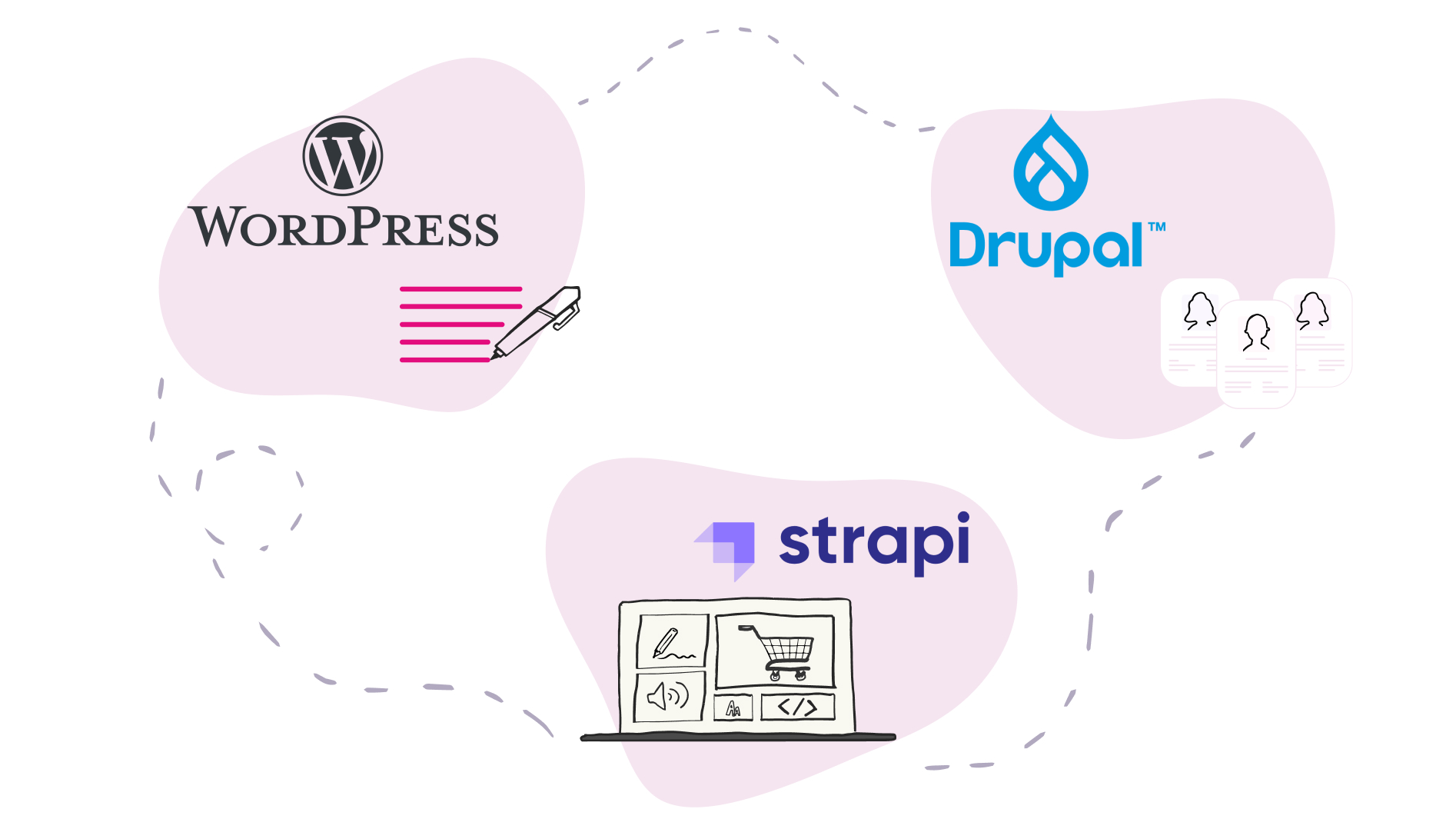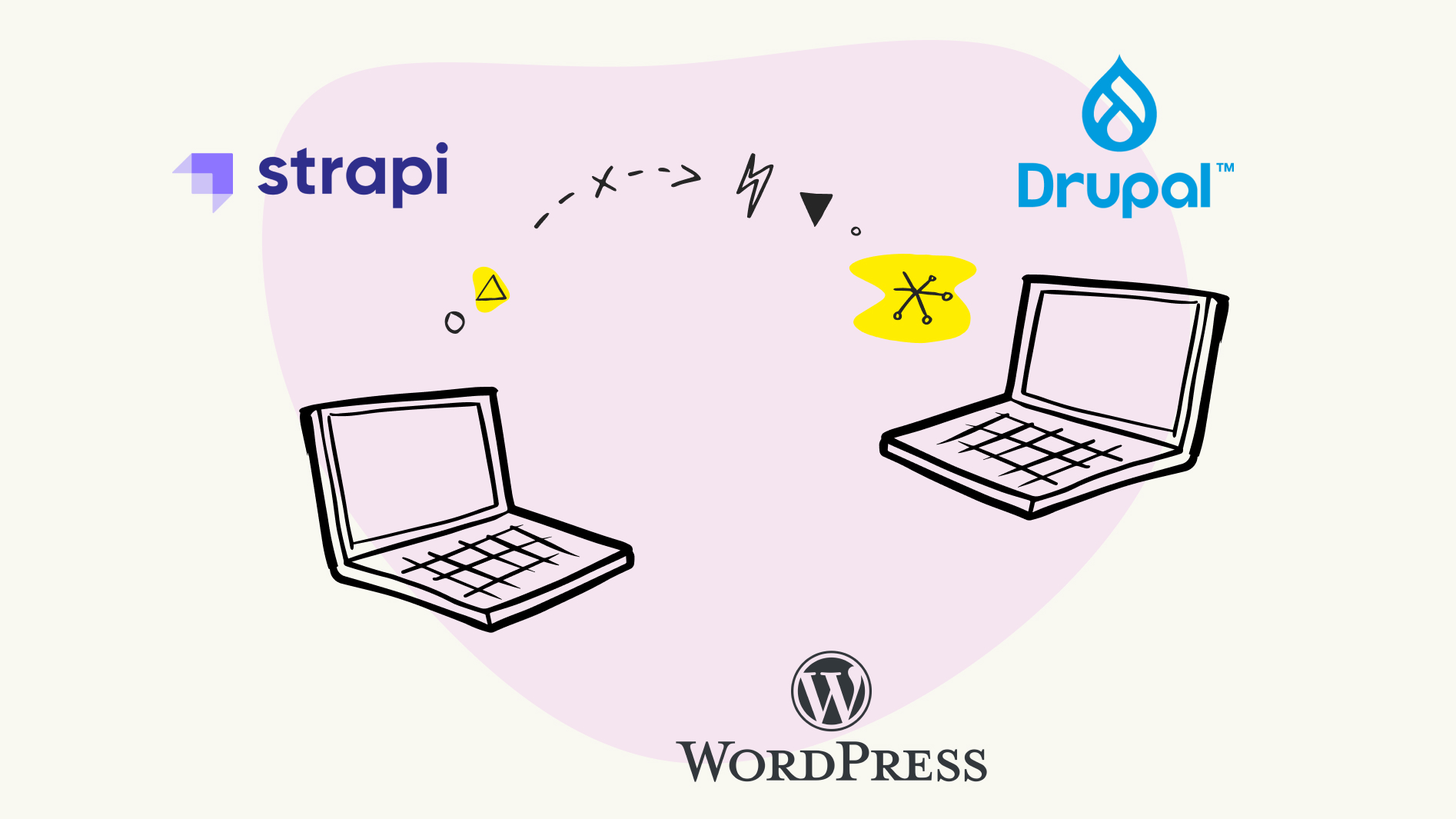
For many organisations, the task of choosing a content management system (CMS) happens at least once. For organisations over 25 years of age, choosing a CMS has probably happened more than once already. It is often stressful and we’ve been through this process many times with clients and also with our own web properties. In this blog, we aim to help you decide on three popular CMSs – Drupal, WordPress and Strapi.

What is Drupal?
Drupal is a highly flexible and powerful open-source content management system known for its robustness and scalability. It’s particularly well-suited for complex, large-scale websites and applications. Extensive customisation options are available through thousands of contributed modules which have been provided and maintained by a vibrant and diverse community. It also features advanced user role and permission settings, which, combined with a highly configurable workflow system, provide a sophisticated, yet easy-to-use publication process. It’s also known for its strong taxonomy system that allows for complex content organisation and categorisation. It’s best suited for (but not limited to) organisations looking for a highly customisable and secure platform that can handle complex data structures and workflows, Drupal is ideal for large-scale, content-heavy websites.
What is WordPress?
WordPress is the world’s most popular open-source CMS and nearly a household name. Known for its ease of use and flexibility, it started as a blogging platform but has evolved into a comprehensive solution for all types of websites. WordPress is famous for its user-friendly interface and extensive theme and plugin ecosystem. It offers a vast array of customisation options and is relatively easy for non-technical users to manage. It’s best suited to organisations that want a balance of ease of use, flexibility, and customisation. It’s great for a wide range of websites, from corporate sites to e-commerce.
What is Strapi?
Strapi is a modern, open-source, headless CMS. Being headless, it focuses solely on back-end content management and delivers content via APIs (Application Programming Interfaces), allowing for seamless integration with various front-end technologies. It’s highly customisable and developer-friendly, providing APIs for building modern, multi-channel experiences. It supports both REST and GraphQL. It works well for rapid development when you know the structure of your content quite well and there isn’t a need for versioning of your content, complex categorisation of your content and complex publishing workflows.
Matching the CMS to the purpose of the site
Government websites
Local councils and government agencies are in a great position to benefit from Drupal particularly a specialised Drupal distribution called LocalGov Drupal (LGD). LGD has been developed over the past seven years and used on 44 councils and a few government agencies. Consider LGD as the de facto development accelerator for Local Council websites.
We have worked extensively with LGD on Essex County Council’s public-facing site and intranet site, Knowsley Borough Council, Colchester City Council and Active Travel England to rapidly build transformational sites.
E-Commerce web sites
All three CMSs we are examining are more than capable of providing you with a site to sell your goods and services. Clients we’ve developed e-commerce solutions include The Ramblers (using Drupal) and Colchester City Council, where we created a custom plugin to integrate with an existing WordPress microsite.
Migrating existing content

If your existing site has data you’d like to reuse and re-purpose on the new platform, migrating that data is not a barrier for any of these three systems. Drupal has a comprehensive set of migration tools built in, as well as a thriving ecosystem of existing modules to assist with automated migrations. Likewise, for WordPress, there are a variety of plugins available to aid with automated migration from a variety of different systems. We also have extensive experience in scraping the data from existing sites to import into Drupal, WordPress and Strapi.
We need an app!
Often, organisations feel the need for a smartphone or tablet app. In some cases, this need can be satisfied with a Progressive Web App (PWA). Here again, all three CMSs we’re focusing on are capable of providing that kind of experience.
In the work we undertook with The Ramblers, an existing app was created by a third party using Drupal’s robust and sophisticated API. We supplied machine-readable content that is consumed by that app as well as by the local Ramblers groups’ websites. This provides a highly efficient “create once, publish everywhere” system for The Ramblers.
How we can help!
We have covered some of the most common issues you might be contemplating for your CMS and perhaps only scratching the surface. There are no doubt many more aspects to consider in your choice of CMS and we are very happy to explore these with you to eliminate the uncertainty and make a solid plan for the future. Contact us today!
We drive commercial value for our clients by creating experiences that engage and delight the people they touch.
Email us:
hello@nomensa.com
Call us:
+44 (0) 117 929 7333


